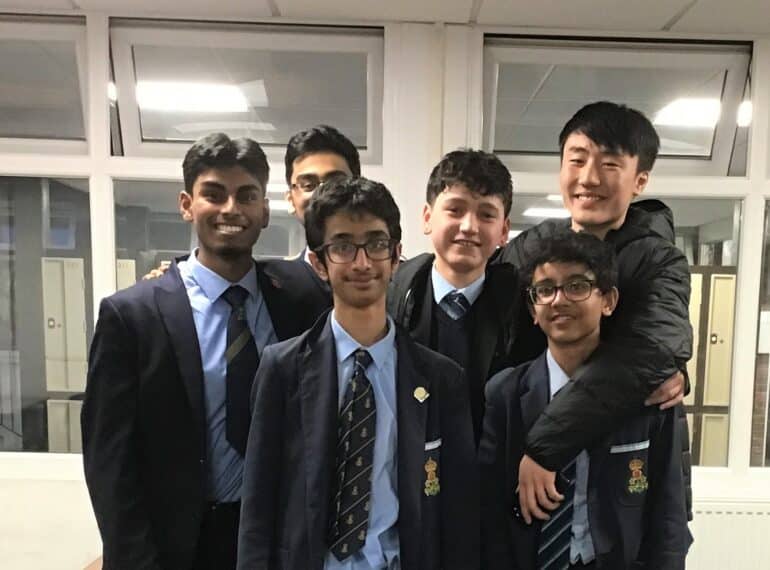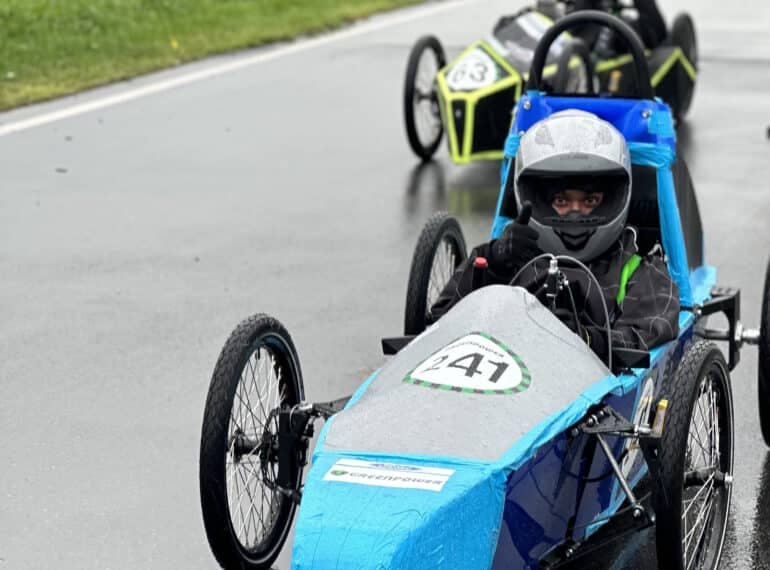
After two-and-a-half years of hard work, patience and perseverance, an electric car built by QE’s first Greenpower team overcame both mechanical challenges and terrible weather to perform strongly against much more experienced competitors in its first race.
 Having gathered information at the Dunsfold Park track in Surrey early in September, the Year 11 team travelled to Castle Combe in Wiltshire for their first competitive outing.
Having gathered information at the Dunsfold Park track in Surrey early in September, the Year 11 team travelled to Castle Combe in Wiltshire for their first competitive outing.
A mechanical failure in the first race threatened to scupper their efforts, but the pit crew overcame the odds to get the car – called New Horizon – ready for the starting grid just a couple of minutes before the start of the second, and final, F24 race of the day.
Congratulating the team, Head of Digital Teaching and Learning Michael Noonan said: “Torrential rain was abundant, and while many other cars either could not hold the track, or simply retired, our team stuck to their task: in the second race, they finished a highly respectable 44th out of 79 competitors – a feat all the more impressive given that they carried out an extra driver swap to give all our students a chance to drive.”
The event was one of a series of races run by the Greenpower Education Trust, a UK-based charity which aims to get young people enthusiastic about science and engineering.
The boys planned, built and refined the car using a Greenpower kit. Having promoted the car themselves, they won sponsorship from Horizon Builders, a North London construction, decorating and property maintenance company.
“Using the experience gained at Dunsfold Park, home to the BBC’s Top Gear, the students spent many late evenings (including a few quick runs around the School site) testing braking, circuitry, and speed,” said Mr Noonan.
Castle Combe is some 115 miles (186km) from the School, so the 12 team members had a 5.15am Sunday morning start on the day of the event. “They arrived in Wiltshire expecting a small crowd, given the early hour, but were instead greeted by the awesome sight of a total of 79 F24 (age 12–16) and 24 F24+ (age 16–24) teams in full flight with their preparations for the race day ahead. The sheer challenge which Greenpower would entail suddenly dawned on both staff and students!”
 The boys duly threw themselves into preparing for the rigorous scrutineering process. “Following some adjustments to the braking system, and with the absolute minimum amount of time left, the team passed all tests, with only small notes on adjustments required for future races.
The boys duly threw themselves into preparing for the rigorous scrutineering process. “Following some adjustments to the braking system, and with the absolute minimum amount of time left, the team passed all tests, with only small notes on adjustments required for future races.
“From here, it was on to their first practice session – in some cases, students’ first experience of driving this car. The car, number 241 on the day, seemed to be performing admirably and was operating without fault. Each driver managed his session without any major issues, although it quickly because apparent that conditions were to worsen over the day, and that our performance would have to be adjusted to account for the wet weather.
“Following minor tweaks in the ‘paddock’, which had all the necessary tools and equipment, the first sets of drivers for the first race took to the grid. As the track lights signalled the commencement of the race, our relatively inexperienced team seemed to be punching above their weight; the last-minute aerodynamic and cooling adjustments provided for smooth racing.”
“It was at the point of driver change that a minor mechanical noise was noticed, and an inspection took place. With no obvious issue evident, the new driver took over and upon his first acceleration he managed to delink the chain! What had happened was that vibrations across the rear axle had loosened grub screws. With this looseness, the axle was ‘coasting’ left to right (which would slow the drive down enormously), and when our second driver took his seat and hit the throttle, the chain lodged against the chain guard at the link point and immediately disconnected!”
“The team was faced with disaster,” said Mr Noonan. “Having only covered 9.25 kilometres in their first race, they had to bow out just before the halfway point and immediately go about repairing the damage caused.”
With only two hours between races, the team had to strip back all mechanical items and re-assemble them to produce a working car. “Through sheer grit, determination and thanks in no small part to the kindness of other teams who happily supplied spare parts, New Horizon was race-ready with around two minutes to spare.”
 Buoyed by their success in reaching the tight deadline, the boys set about trying to better their first race score and duly achieved this, ending the day with a score of 22.59. (Greenpower F24 race results are determined by a formula based on furthest distance travelled within the 90-minute time period, taking the better figure from the two races.)
Buoyed by their success in reaching the tight deadline, the boys set about trying to better their first race score and duly achieved this, ending the day with a score of 22.59. (Greenpower F24 race results are determined by a formula based on furthest distance travelled within the 90-minute time period, taking the better figure from the two races.)
Afterwards, team members reflected on the day. Adithya Raghuraman said the team had been “nervous from anticipation leading up to the day”, but that it had proved a “memorable” experience. “Even the journey to the track was incredible, despite it being brutally early in the morning. Getting to meet and collaborate with other schools, scavenge for parts from fellow teams, and enthusiastically wait for our car to come around near our pit each lap, were all valuable chances to learn, compete, and most importantly, enjoy.”
His fellow teammate, Daksh Vinnakota, and Year 10 apprentice Keeyan Shah were both also thrilled with the experience: it had been “a good opportunity to finally demonstrate our work over the past two years in a competitive situation,” said Daksh, with Keeyan adding that the day had provided “a unique insight into professional racing”.
Although after the start of the 2023 Autumn Term , the Castle Combe races were in fact the final regional round in the 2022–2023 Greenpower season. The QE team are now handing over to Year 10 boys, who were their apprentices in the 2022-23 season, and will be mentoring and supporting them throughout the rest of the new season.
 “As the season unfolds, the 2023–24 Greenpower team will be looking for around four willing Greenpower apprentices from Year 9 to join the cause and ‘upskill’ with a view to competing in Year 10,” said Mr Noonan.
“As the season unfolds, the 2023–24 Greenpower team will be looking for around four willing Greenpower apprentices from Year 9 to join the cause and ‘upskill’ with a view to competing in Year 10,” said Mr Noonan.
“This year’s team are already plotting a climb up the national leaderboard, which if they are fortuitous, will result in their participation at the Goodwood World Finals in October 2024.”
He added that the outgoing team had thanked their sponsors and the staff involved – Science teacher Timothy Panis and Technology assistant Felix Chillingworth, as well as himself – “for their support in finally seeing the Queen Elizabeth’s Greenpower team make their presence felt”.
Team members 2022–2023 season (current Year 11)
Soham Kale
Siddarth Oruganti
Rudra Patel
Adithya Raghuraman
Kavin Rameshshanker
Siraj Sidhu
Vinujan Sivakumar
Binaga Solangaarachchi
Ishanth Thangella
Daksh Vinnakota
Ethan Dias
Danyl Malchyk
Apprentices 2022–2023 season (current Year 10)
Taha Sebbar
Keeyan Shah
Dev Malde
Balaram Kataria
Yuvraj Patel
Ayush Saha
Parv Gandhi
Shashank Devaguptapu
Akshaj Vyas
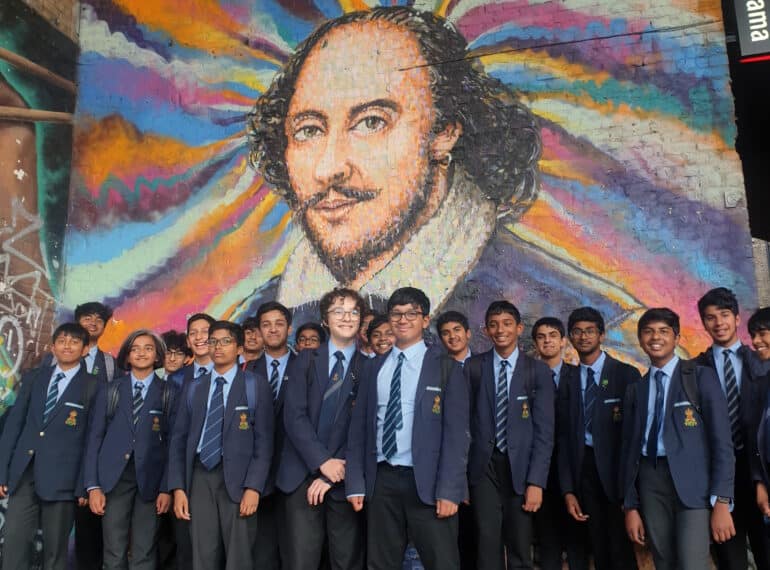
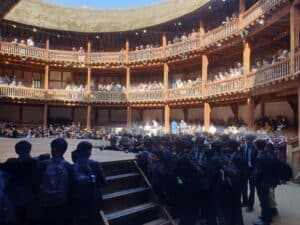 The visit by the whole year group over three days was only the latest in a series of QE trips to the Globe: in the last three months, more than 400 boys and staff have travelled down the Northern Line to see Shakespeare plays at the modern reconstruction close to the site of the 17th-century theatre.
The visit by the whole year group over three days was only the latest in a series of QE trips to the Globe: in the last three months, more than 400 boys and staff have travelled down the Northern Line to see Shakespeare plays at the modern reconstruction close to the site of the 17th-century theatre. Other recent trips to the Globe have been to see two comedies: A Midsummer Night’s Dream and The Comedy of Errors, set respectively in the ancient cities of Athens, Greece, and Ephesus, in modern-day Türkiye (Turkey).
Other recent trips to the Globe have been to see two comedies: A Midsummer Night’s Dream and The Comedy of Errors, set respectively in the ancient cities of Athens, Greece, and Ephesus, in modern-day Türkiye (Turkey).

 Having gathered information at the Dunsfold Park track in Surrey early in September, the Year 11 team travelled to Castle Combe in Wiltshire for their first competitive outing.
Having gathered information at the Dunsfold Park track in Surrey early in September, the Year 11 team travelled to Castle Combe in Wiltshire for their first competitive outing. The boys duly threw themselves into preparing for the rigorous scrutineering process. “Following some adjustments to the braking system, and with the absolute minimum amount of time left, the team passed all tests, with only small notes on adjustments required for future races.
The boys duly threw themselves into preparing for the rigorous scrutineering process. “Following some adjustments to the braking system, and with the absolute minimum amount of time left, the team passed all tests, with only small notes on adjustments required for future races. Buoyed by their success in reaching the tight deadline, the boys set about trying to better their first race score and duly achieved this, ending the day with a score of 22.59. (Greenpower F24 race results are determined by a formula based on furthest distance travelled within the 90-minute time period, taking the better figure from the two races.)
Buoyed by their success in reaching the tight deadline, the boys set about trying to better their first race score and duly achieved this, ending the day with a score of 22.59. (Greenpower F24 race results are determined by a formula based on furthest distance travelled within the 90-minute time period, taking the better figure from the two races.) “As the season unfolds, the 2023–24 Greenpower team will be looking for around four willing Greenpower apprentices from Year 9 to join the cause and ‘upskill’ with a view to competing in Year 10,” said Mr Noonan.
“As the season unfolds, the 2023–24 Greenpower team will be looking for around four willing Greenpower apprentices from Year 9 to join the cause and ‘upskill’ with a view to competing in Year 10,” said Mr Noonan.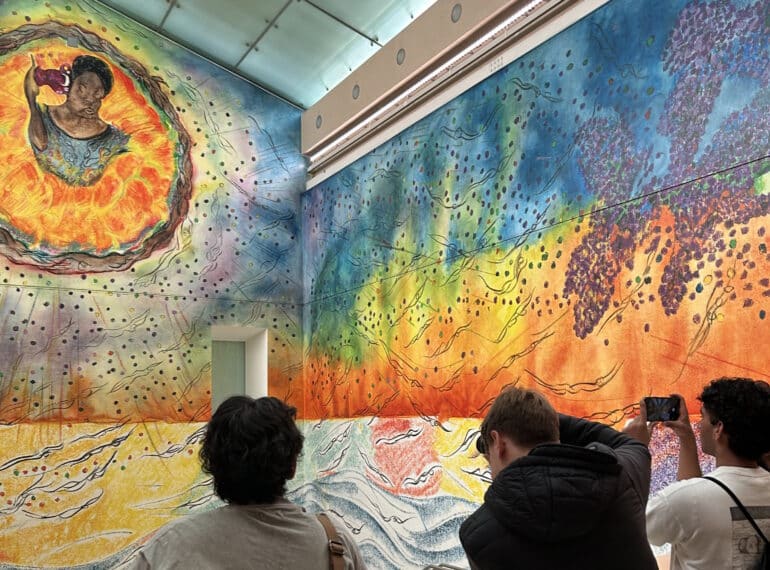
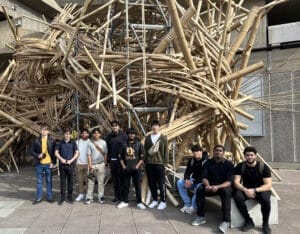 Head of Art Craig Wheatley said the boys had been moved by what they saw there: “The scale and beauty of such a poetic piece that highlights the tragedy was very poignant and a reminder of the impact art can have on the viewer.
Head of Art Craig Wheatley said the boys had been moved by what they saw there: “The scale and beauty of such a poetic piece that highlights the tragedy was very poignant and a reminder of the impact art can have on the viewer.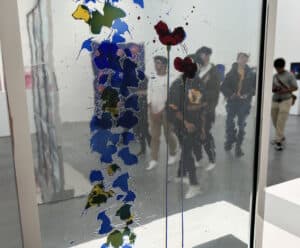 Moving on from the Tate, the group walked to Newport Street Gallery and enjoyed the glass work of British artist Brian Clarke.
Moving on from the Tate, the group walked to Newport Street Gallery and enjoyed the glass work of British artist Brian Clarke. The exhibition explored themes of conflict, displacement and the asymmetry of power. Mr Wheatley said: “The large abstract pieces challenged the boys’ understanding of artwork that makes numerous social and political references without the use of a literal visual narrative.”
The exhibition explored themes of conflict, displacement and the asymmetry of power. Mr Wheatley said: “The large abstract pieces challenged the boys’ understanding of artwork that makes numerous social and political references without the use of a literal visual narrative.”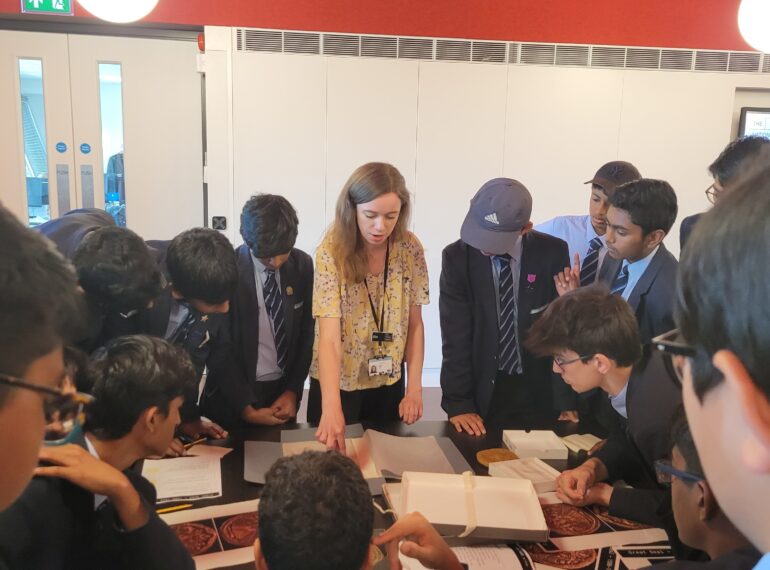
 Among the artefacts viewed by the group during their visit to Kew was the actual letter – known as the ‘Tide Letter’ – written by the future Queen Elizabeth I, founder of Queen Elizabeth’s School, as she battled for survival following her arrest in 1554.
Among the artefacts viewed by the group during their visit to Kew was the actual letter – known as the ‘Tide Letter’ – written by the future Queen Elizabeth I, founder of Queen Elizabeth’s School, as she battled for survival following her arrest in 1554. The visit was a reward for the boys who submitted the best entries to Project 1573. This involved small groups of boys being given three primary sources relating to a particular aspect of QE’s history and then asked to produce a three-minute presentation after accessing
The visit was a reward for the boys who submitted the best entries to Project 1573. This involved small groups of boys being given three primary sources relating to a particular aspect of QE’s history and then asked to produce a three-minute presentation after accessing 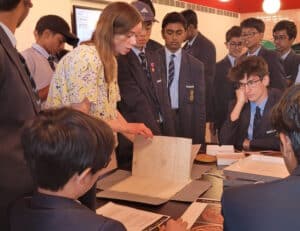 Kelvin Chen, Ethan Yao, Jonas Dawit and Rishi Sen, also of Year 8 Pearce, researching E W Harrison, a long-serving teacher who retired in 1950 and is one of the two unrelated people after whom the Harrisons’ House is named
Kelvin Chen, Ethan Yao, Jonas Dawit and Rishi Sen, also of Year 8 Pearce, researching E W Harrison, a long-serving teacher who retired in 1950 and is one of the two unrelated people after whom the Harrisons’ House is named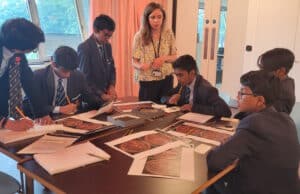 “The students were able to see the neat handwriting at the start of the letter become larger and messier as she was likely made to hurry by those waiting to escort her to the Tower. Fearing her enemies might alter the letter, Elizabeth struck lines through the blank space above her signature,” said Mrs Blackford.
“The students were able to see the neat handwriting at the start of the letter become larger and messier as she was likely made to hurry by those waiting to escort her to the Tower. Fearing her enemies might alter the letter, Elizabeth struck lines through the blank space above her signature,” said Mrs Blackford. QE’s founding Royal Charter of 1573 was authorised with Queen Elizabeth’s first seal. This, however, wore out during her long reign, and, Ms Blackford said, the boys enjoyed finding out about its replacement: “It is noticeably more elaborate, as Elizabeth had started to closely monitor her image.”
QE’s founding Royal Charter of 1573 was authorised with Queen Elizabeth’s first seal. This, however, wore out during her long reign, and, Ms Blackford said, the boys enjoyed finding out about its replacement: “It is noticeably more elaborate, as Elizabeth had started to closely monitor her image.”
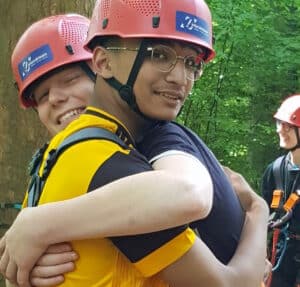 The Year 9 trip to the north German city of Bielefeld saw the QE party enjoy the high life at one of the world’s tallest and fastest roller-coasters, at a tree-climbing adventure park and at the mediaeval Sparrenberg Castle (known locally as the Sparrenburg), which towers over the city centre.
The Year 9 trip to the north German city of Bielefeld saw the QE party enjoy the high life at one of the world’s tallest and fastest roller-coasters, at a tree-climbing adventure park and at the mediaeval Sparrenberg Castle (known locally as the Sparrenburg), which towers over the city centre.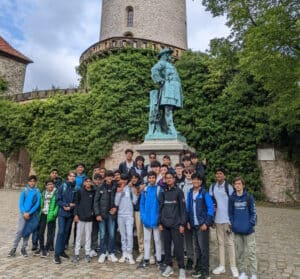 The exchange, which began in 2005, is with a co-educational grammar school (or ‘Gymnasium’), Friedrich von Bodelschwingh Gymnasium in Bielefeld. The school is named after a German pastor, theologian and public health advocate, who ran large homes for people with learning difficulties and refused to comply with the Nazis’ euthanasia policies.
The exchange, which began in 2005, is with a co-educational grammar school (or ‘Gymnasium’), Friedrich von Bodelschwingh Gymnasium in Bielefeld. The school is named after a German pastor, theologian and public health advocate, who ran large homes for people with learning difficulties and refused to comply with the Nazis’ euthanasia policies.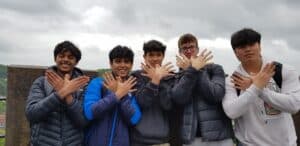 Music: the boys created their own digital music using GarageBand software. One of the party, Peter Atanasov, said: “We made our own beats on iPads to accompany a melody and learnt about new music genres as well.”
Music: the boys created their own digital music using GarageBand software. One of the party, Peter Atanasov, said: “We made our own beats on iPads to accompany a melody and learnt about new music genres as well.”